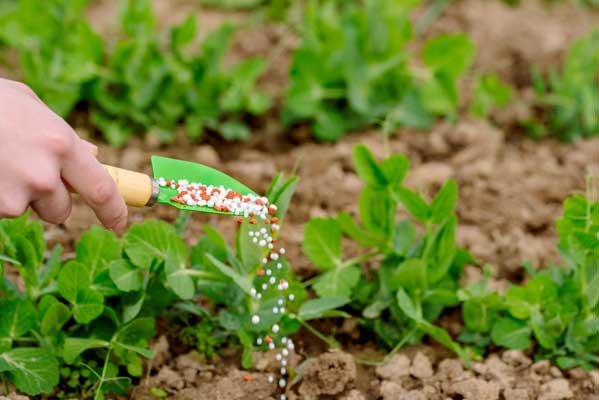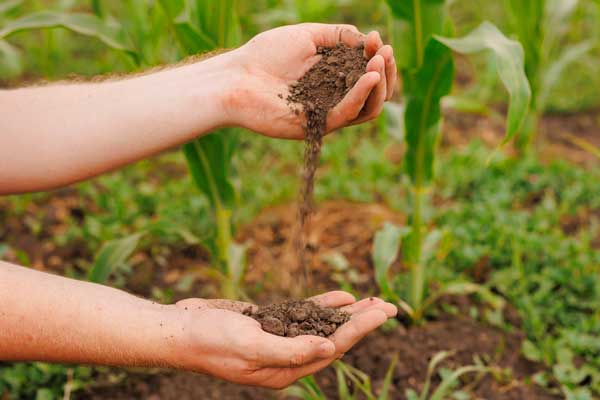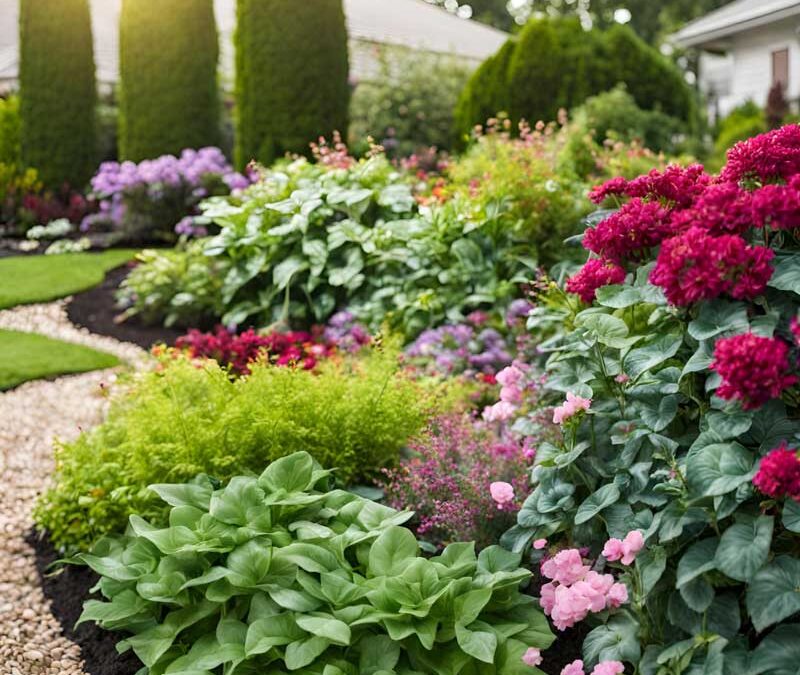Using 10-10-10 fertilizer is a key practice for nurturing lush, vibrant lawns and flourishing gardens. This versatile fertilizer, known for its balanced nutrient composition, plays a vital role in promoting healthy plant growth. With an equal distribution of nitrogen, phosphorus, and potassium, It provides essential nourishment to plants, supporting robust root development, vibrant foliage, and abundant blooms. Proper fertilization is paramount for maintaining the vitality and resilience of your lawn and garden, ensuring they can withstand environmental stressors and thrive throughout the growing season.
Components of 10-10-10 Fertilizer
10-10-10 fertilizer contains three main nutrients essential for plant growth: nitrogen, phosphorus, and potassium. These nutrients work together to support healthy plant development and robust growth.
Nitrogen
Nitrogen is responsible for promoting lush, green foliage and vigorous plant growth. It stimulates the production of chlorophyll, the green pigment crucial for photosynthesis, which enables plants to convert sunlight into energy.
Phosphorus
Phosphorus plays a vital role in root development, flowering, and fruiting. It facilitates energy transfer within plants and helps them utilize other nutrients more efficiently. Adequate phosphorus levels contribute to strong root systems and improved plant resilience.
Potassium
Potassium acts as a protector and strengthener, enhancing plants’ ability to withstand environmental stressors such as drought, disease, and temperature fluctuations. It promotes overall plant health, improves water retention, and enhances disease resistance.
Understanding the NPK Ratio
The NPK ratio, represented as three numbers separated by hyphens (e.g., 10-10-10), indicates the proportion of nitrogen (N), phosphorus (P), and potassium (K) in the fertilizer. Understanding this ratio is essential for determining the nutrient composition and potential benefits of the fertilizer.
Balanced Nutrition
A balanced NPK ratio, such as 10-10-10, signifies that the fertilizer contains equal proportions of nitrogen, phosphorus, and potassium. This balanced formulation provides comprehensive nutrition to plants, supporting their overall growth and development.
Optimal Plant Health
By supplying plants with the necessary nutrients in balanced proportions, 10-10-10 fertilizer promotes optimal plant health and vitality. It addresses a wide range of nutritional needs, ensuring that plants have access to essential elements for robust growth and productivity.
Versatile Application
The balanced NPK ratio makes 10-10-10 fertilizer suitable for a variety of plants, including lawns, ornamentals, vegetables, and fruit trees. Its versatility allows gardeners to use it effectively in different gardening contexts, providing comprehensive nutrition to a wide range of plants.

Liquid vs. Granular Fertilizer
When deciding between liquid and granular fertilizer, it’s important to consider the unique benefits and drawbacks of each type. Both liquid and granular fertilizers offer advantages that can contribute to the health and vitality of your lawn, garden, and plants.
Liquid Fertilizer
Liquid fertilizer is a convenient option for gardeners seeking quick and efficient nutrient application. This type of fertilizer is typically mixed with water and applied using a sprayer or watering can. One of the key advantages of liquid 10-10-10 fertilizer is its fast absorption by plants, allowing for rapid nutrient uptake and visible results.
Pros
|
Cons
|
Granular Fertilizer
Granular 10-10-10 fertilizer consists of solid, granular particles that are spread evenly across the soil surface. This type of fertilizer provides a slow-release nutrient supply, gradually feeding plants over an extended period. Granular fertilizers are typically applied using a spreader, which evenly distributes the fertilizer across the lawn or garden.
|
|
Plants Suitable for 10-10-10 Fertilizer
Fertilizer can benefit a wide range of plants, including lawns, ornamentals, vegetables, and fruit trees. Its balanced nutrient composition provides essential elements that support healthy growth and development across various plant species.
- 10-10-10 Fertilizer for lawn: It is ideal for promoting lush, green grass in lawns. Its balanced blend of nitrogen, phosphorus, and potassium encourages vigorous foliage growth and strong root development, resulting in a dense, resilient turf.
- 10-10-10 Fertilizer for Ornamentals: Flowers, shrubs, and ornamental plants can thrive with the help of fertilizer. The balanced nutrients promote vibrant blooms, healthy foliage, and overall plant vigor, enhancing the beauty of garden landscapes.
- Vegetable garden Fertilizer 10 10 10 , such as tomatoes, peppers, and leafy greens, benefit from the balanced nutrition provided by fertilizer. It supports robust plant growth, improves fruit and vegetable yields, and enhances nutritional quality.
- 10-10-10 Fertilizer for Fruit Trees: Fruit-bearing trees, including apple, peach, and citrus trees, can benefit from fertilizer to support healthy fruit production. The balanced nutrients aid in tree vigor, flowering, and fruit development, resulting in abundant harvests.

Using 10-10-10 Fertilizer Overapplication
While using fertilizer offers numerous benefits for plant health, it’s essential to exercise caution to avoid overapplication. Overfertilizing can lead to nutrient imbalances, soil toxicity, and environmental pollution.
Avoid Excessive Application: Apply fertilizer according to recommended rates and guidelines to prevent nutrient overload. Overapplication can stress plants, cause leaf burn, and disrupt soil ecosystems.
Follow Instructions Carefully: Read and follow the manufacturer’s instructions on the fertilizer label regarding application rates, timing, and methods. Proper application ensures optimal nutrient uptake by plants without risking damage.
Monitor Plant Response: Observe plant response to fertilizer application, including leaf color, growth patterns, and overall health. Adjust fertilizer applications as needed based on plant needs and visual cues to avoid overfertilization.
Essentials to Consider Before You Begin
Before applying fertilizer to your lawn or garden, it’s essential to consider several precautions and considerations to ensure successful and safe application.
Soil Testing
Conduct a soil test to assess nutrient levels and pH balance before applying fertilizer. Soil testing helps determine the specific nutrient needs of your plants and guides fertilizer application rates and formulations.
Environmental Conditions:
Consider environmental factors such as weather, temperature, and moisture levels when planning fertilizer application. Avoid applying fertilizer during periods of extreme heat or drought to prevent stress to plants and minimize nutrient loss through leaching.
Equipment and Safety
Use appropriate equipment, such as spreaders or sprayers, for even and efficient fertilizer application. Wear protective gear, such as gloves and goggles, when handling fertilizers to prot
Importance of Soil Testing in Determining Fertilizer Needs
Soil testing is a valuable tool for gardeners to assess soil health, nutrient levels, and pH balance, guiding informed decisions about fertilizer application and soil amendments. Conducting regular soil tests helps determine the specific nutrient requirements of plants, ensuring optimal plant nutrition and health.
Nutrient Assessment
Soil tests provide valuable information about the levels of essential nutrients, such as nitrogen, phosphorus, and potassium, in the soil. By analyzing nutrient levels, gardeners can identify deficiencies or excesses and tailor fertilizer applications to meet plant needs effectively.
pH Analysis
Soil tests also measure soil pH, which influences nutrient availability and plant growth. Understanding soil pH helps determine the suitability of plants for specific soil conditions and guides adjustments to pH levels through soil amendments, such as lime or sulfur.
Customized Recommendations
Soil test results provide customized recommendations for fertilizer types, application rates, and timing based on specific plant requirements and soil conditions. By following these recommendations, gardeners can optimize fertilizer use, minimize waste, and promote efficient nutrient uptake by plants.
Environmental Protection
Soil testing helps prevent overapplication of fertilizers, reducing the risk of nutrient runoff, leaching, and environmental pollution. By applying fertilizers judiciously based on soil test results, gardeners can minimize nutrient loss and protect water quality and ecosystem health.
By recognizing the importance of soil testing and incorporating it into their gardening routine, gardeners can make informed decisions about fertilizer use, promote soil health, and nurture thriving plants in their gardens.

How to apply 10-10-10 Fertilizer
To maximize the benefits of 10-10-10 fertilizer and ensure effective nutrient delivery to your plants, follow these simple guidelines for application:
By Surface Area (Lawns)
Spread fertilizer evenly across the lawn surface using a spreader. Apply fertilizer when the grass is dry to prevent clumping and ensure uniform coverage.
By Individual Plants
Apply fertilizer directly to the soil around individual plants, avoiding contact with leaves or stems. Use a scoop or measuring cup to distribute the fertilizer evenly around the plant base, then water thoroughly to help nutrients penetrate the soil.
By Plant Row (Crops)
For vegetable gardens or crop rows, apply fertilizer along planting rows or between rows. Use a hoe or rake to incorporate the fertilizer into the soil surface, then water thoroughly to activate nutrients and promote uptake by plants.
By following these simple steps and considering important precautions, you can effectively use 10-10-10 fertilizer to promote healthy plant growth and maximize the productivity of your lawn and garden.
Advantages of Using 10-10-10 Fertilizer
Using 10-10-10 fertilizer offers numerous advantages that contribute to its popularity and effectiveness in promoting plant health and vitality. Understanding these benefits can help gardeners make informed decisions about their fertilization practices and maximize the benefits of this versatile fertilizer.
Balanced Nutrition
The balanced blend of nitrogen, phosphorus, and potassium in fertilizer provides comprehensive nutrition to plants, supporting healthy growth, strong root development, and overall plant vigor. This balanced nutrition ensures that plants have access to essential nutrients for optimal performance and resilience.
Versatility
The fertilizer is suitable for use in various gardening contexts, including lawns, ornamentals, vegetable gardens, and fruit trees. Its versatility allows gardeners to address the nutritional needs of a wide range of plants with a single fertilizer product, simplifying their fertilization routine and promoting consistent plant health across the garden.
Convenience
Fertilizer is readily available in garden centers and nurseries, making it easily accessible to gardeners of all skill levels. Its simple application process and compatibility with common gardening equipment, such as spreaders and watering cans, enhance convenience and ease of use.
Cost-Effectiveness
Compared to purchasing separate fertilizers for nitrogen, phosphorus, and potassium, using 10-10-10 fertilizer can be a cost-effective solution for meeting plant nutrient requirements. By providing balanced nutrition in a single product, gardeners can achieve optimal plant health and productivity while minimizing expenses.
Overall, the advantages of using 10-10-10 fertilizer make it a valuable tool for promoting plant health, simplifying fertilization routines, and maximizing gardening success. By harnessing its balanced nutrition, versatility, convenience, and cost-effectiveness, gardeners can nurture thriving gardens and landscapes with confidence.
Disadvantages of 10-10-10 Fertilizer
Potential Drawbacks and Risks Associated with Fertilizer. Despite its numerous benefits, fertilizer also has potential drawbacks and risks that gardeners should be aware of when using this product. Understanding these considerations can help gardeners make informed decisions and mitigate any potential negative effects associated with its use.
Excessive Nutrients
One of the risks associated with fertilizer is the potential for overapplication, leading to excessive nutrient levels in the soil. Overfertilization can result in nutrient imbalances, toxicity, and adverse effects on plant health, such as leaf burn or stunted growth. To avoid these issues, it’s essential to follow recommended application rates and guidelines when using The fertilizer and monitor plant response closely.
Chemicals
Some fertilizers may contain hazardous chemicals or additives that pose risks to human health and the environment. These chemicals can include synthetic dyes, preservatives, or fillers that may be harmful if ingested or come into contact with skin or eyes. Gardeners should read product labels carefully, wear appropriate protective gear when handling fertilizers, and store them safely out of reach of children and pets.
Nitrogen Runoff
Excess nitrogen from fertilizer can contribute to nitrogen runoff, a form of water pollution that can harm aquatic ecosystems and water quality. Nitrogen runoff occurs when rain or irrigation water carries excess fertilizer from the soil surface into nearby water bodies, such as rivers, lakes, or streams. To minimize nitrogen runoff, avoid applying fertilizer before heavy rainfall or watering, and use controlled-release formulations that reduce nutrient leaching.
Salt
Fertilizer may contain high levels of salt, which can accumulate in the soil over time and negatively impact plant health. Salt buildup can lead to soil salinity, which inhibits water and nutrient uptake by plant roots, causing dehydration, nutrient deficiency, and plant stress. To prevent salt accumulation, use 10-10-10 fertilizer sparingly and flush the soil periodically with water to leach out excess salts.
By being aware of these potential drawbacks and risks associated with the fertilizer, gardeners can take proactive measures to mitigate their impact and ensure safe and responsible use of this valuable gardening resource. By following recommended guidelines, monitoring plant health, and implementing best practices, gardeners can harness the benefits of the fertilizer while minimizing any potential negative effects on plant, human, and environmental health.

Organic Alternatives to Traditional 10-10-10 Fertilizer
While fertilizer offers many benefits, some gardeners may prefer organic alternatives for their gardening needs. Organic fertilizers provide nutrients derived from natural sources, offering a sustainable and environmentally friendly option for promoting plant growth and health.
Compost
Compost is a nutrient-rich organic material made from decomposed plant matter, food scraps, and other organic materials. It provides a slow-release source of nutrients, improves soil structure and fertility, and enhances microbial activity in the soil. Incorporating compost into the soil can help meet plant nutrient needs while promoting soil health and sustainability.
Manure
Animal manure, such as composted chicken, cow, or horse manure, is a valuable organic fertilizer rich in nitrogen, phosphorus, and potassium. It provides essential nutrients for plant growth, improves soil structure and moisture retention, and promotes beneficial soil microorganisms. Using well-aged manure ensures that it has decomposed sufficiently to prevent burning or nutrient imbalances in plants.
Bone Meal
Bone meal is a natural fertilizer made from ground animal bones and is rich in phosphorus, an essential nutrient for root development and flowering. It promotes strong root growth, enhances bloom production, and improves overall plant health. Bone meal is particularly beneficial for flowering plants, bulbs, and fruit-bearing trees and shrubs.
Fish Emulsion
Fish emulsion is a liquid organic fertilizer made from fish byproducts, such as fish scraps and offal. It is rich in nitrogen, phosphorus, and trace minerals, providing a quick source of nutrients for plant growth. Fish emulsion improves soil fertility, stimulates microbial activity, and enhances plant vigor and resilience.
By incorporating organic alternatives into their gardening practices, gardeners can promote soil health, minimize environmental impact, and nurture thriving plants in a sustainable and eco-friendly manner.
FAQs about using 10-10-10 Fertilizer
What is 10-10-10 fertilizer?
10-10-10 fertilizer is a balanced fertilizer containing equal parts of nitrogen, phosphorus, and potassium. It’s commonly used in gardening to provide essential nutrients to plants for healthy growth and development.
When to apply fertilizer to lawn?
The best time to apply fertilizer to the lawn is in the early spring or fall when the grass is actively growing. Avoid fertilizing during periods of extreme heat or drought to prevent stress to the grass.
What is use of 10-10-10 fertilizer for lawns?
Yes, the fertilizer is suitable for lawns as it provides balanced nutrition to support lush green grass, strong root development, and overall lawn health.
What is 10-10-10 liquid fertilizer?
Liquid fertilizer is a form of 10-10-10 fertilizer that is dissolved in water for application. It offers the same balanced nutrients as granular fertilizer but in liquid form, allowing for easy and quick absorption by plants.
What is 10-10-10 fertilizer good for?
The fertilizer is good for a variety of plants, including lawns, ornamentals, vegetables, fruit trees, and potted plants. Its balanced nutrient composition promotes healthy growth, flowering, and fruiting in different types of plants.
When to apply nitrogen to the lawn?
Nitrogen can be applied to the lawn along with other nutrients in the form of fertilizer during the active growing seasons, such as spring and fall, to support grass growth and greening.
How to apply 10-10-10 fertilizer?
To apply fertilizer, spread it evenly over the soil surface for lawns or around the base of plants for ornamentals, vegetables, and trees. Follow the instructions on the fertilizer label regarding application rates and methods.
Is 10-10-10 fertilizer good for evergreens ?
Yes, the fertilizer can be used for evergreen trees and shrubs to provide balanced nutrition for healthy growth and foliage. Apply it according to the specific needs of the evergreen species and environmental conditions.
Can I use 10-10-10 fertilizer for potted plants ?
Yes, the fertilizer can be used for potted plants to supply essential nutrients for growth and flowering. Dilute the fertilizer according to the instructions and apply it to the soil surface around the plant roots.
When to fertilize grass?
Grass should be fertilized during the active growing seasons, such as spring and fall, to promote healthy growth and greening. Avoid fertilizing during extreme heat or drought to prevent stress to the grass.
Can I use 10-10-10 fertilizer for new sod or new grass ?
Yes, the fertilizer can be used for new sod or new grass to provide essential nutrients for establishment and growth. Follow the recommended application rates and methods for newly installed turf or seedlings.
Is mixing 10-10-10 fertilizer with water necessary?
Mixing fertilizer with water is not necessary for granular formulations, but it may be required for liquid formulations to create a solution for application. Follow the instructions on the fertilizer label for proper mixing and application methods.
Is 10-10-10 fertilizer good for cucumbers?
Yes, the fertilizer can be beneficial for cucumbers. Its balanced blend of nitrogen, phosphorus, and potassium provides essential nutrients that cucumbers need for healthy growth, flowering, and fruiting. However, it’s important to follow recommended application rates and avoid over-fertilization, which can lead to nutrient imbalances or leaf burn.
Is 10-10-10 fertilizer good for lawns?
Yes, the fertilizer is suitable for lawns as it provides balanced nutrition to support lush green grass, strong root development, and overall lawn health. Applying fertilizer to lawns during the active growing seasons, such as spring and fall, can help promote vigorous growth and greening.
When to apply fertilizer?
The best time to apply fertilizer depends on the specific needs of the plants and the type of fertilizer being used. Generally, fertilizers are applied during the active growing seasons when plants can efficiently utilize nutrients. For lawns, the ideal times for fertilization are in early spring and fall. For other plants, such as vegetables or ornamentals, fertilization timing may vary based on their growth and flowering cycles. Always refer to the instructions on the fertilizer label for specific guidance on when and how to apply.
What is the best time to fertilize the lawn?
The best time to fertilize the lawn is in early spring and fall, during the active growing seasons for grass. Fertilizing in early spring helps kickstart grass growth after winter dormancy, while fall fertilization prepares the lawn for winter and promotes root development. Avoid fertilizing during periods of extreme heat or drought, as this can stress the grass and reduce the effectiveness of the fertilizer.
For further exploration of gardening articles, kindly visit our webpage: Home Garden

